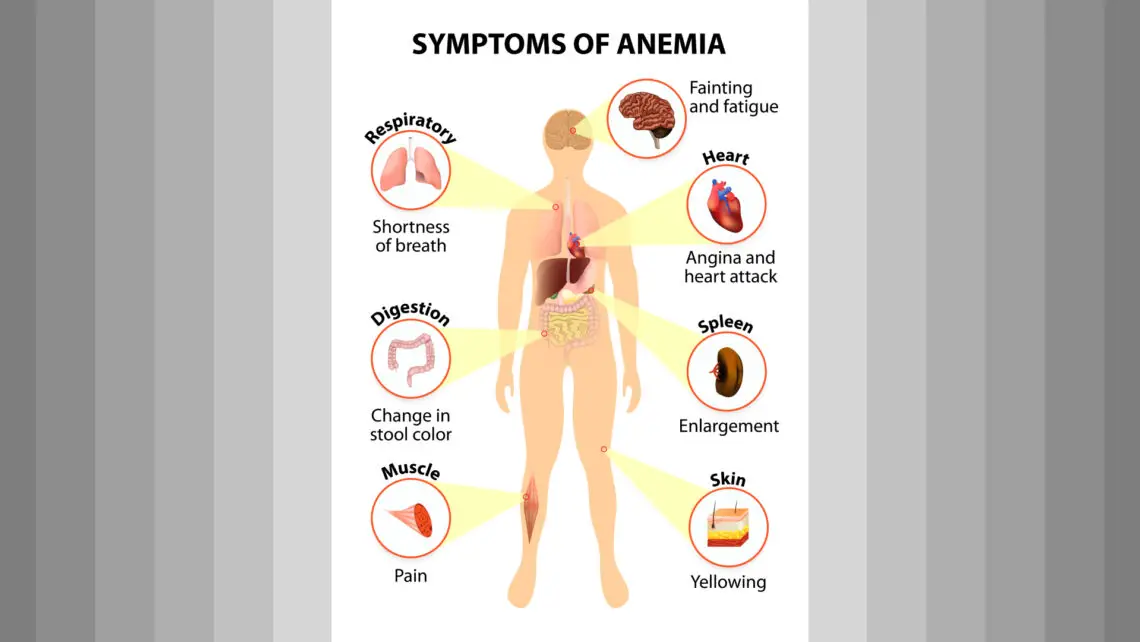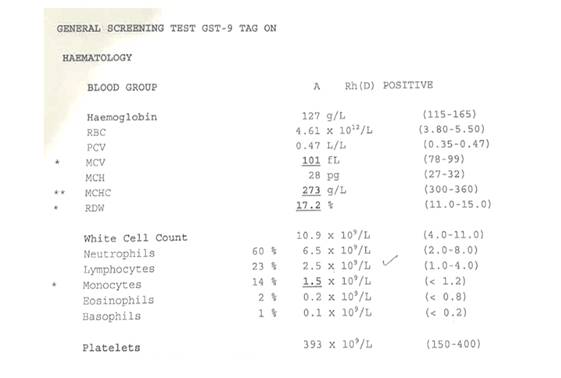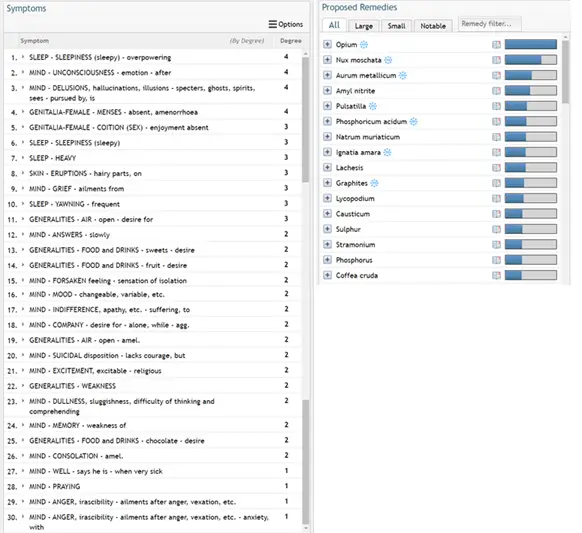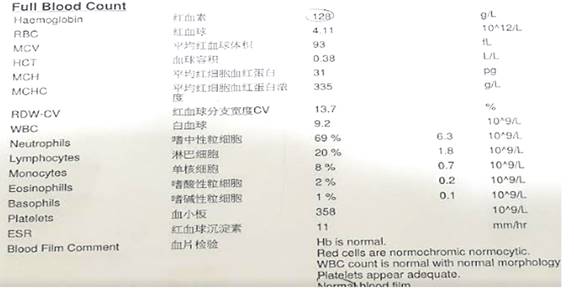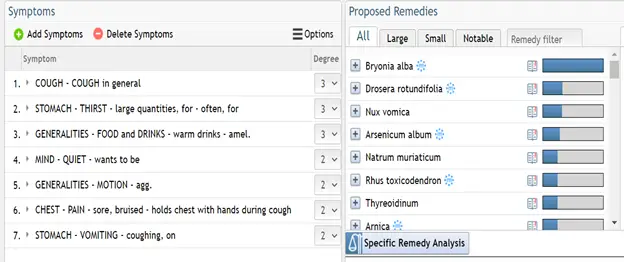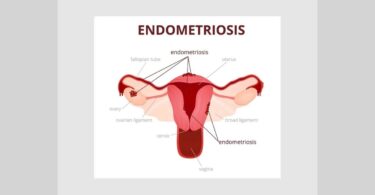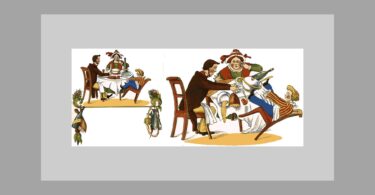Abstract:
Anaemia is a significant global health challenge affecting approximately 2 billion people worldwide. Iron supplements, blood transfusions, and dietary changes are some of the conventional treatment options available. However, these treatments can be challenging as they may have side effects and require long-term adherence.
Classical homeopathy may serve as an alternative. This case report details the treatment of a 50-year-old woman who suffered from depression associated with anaemia despite taking iron supplements and antidepressants for a decade.
After fifteen months of homeopathic treatment, the patient experienced a significant improvement in her anaemia and depression symptoms and reported an overall enhancement in her quality of life. This case highlights the potential of classical homeopathy as an effective and holistic approach for treating anaemia and depression and suggests that it may offer additional benefits beyond simply treating the disease symptoms. However, further research is needed to establish the relevance of classical homeopathy in treating anaemia and depression.
Keywords: Anaemia, Macrocytic anaemia, Depression, Homeopathy, Case report
Background:
Anaemia is a medical condition in which there is a decrease in the number of red blood cells (RBCs) or the amount of haemoglobin in the blood. Haemoglobin is an iron-rich protein in red blood cells that carries oxygen throughout the body. The global epidemiology of anaemia varies significantly across different age groups, gender, and geographical regions.1
According to the World Health Organization (WHO), an estimated 1.62 billion people are affected by anaemia, accounting for 24.8% of the population.1 The prevalence of anaemia is highest in children under five years of age and women of reproductive age group.2
Anaemia can be classified based on morphology of the blood cells, aetiology, pathophysiology and severity. The most commonly used classification is based on the morphology of the red blood cells as presented in table 1.2 Anaemia can be caused by various factors, including nutritional deficiencies (iron, vitamin B12, and folate), chronic diseases (such as kidney disease, cancer, and HIV), inherited disorders (such as sickle cell anaemia and thalassemia), and medications (such as chemotherapy drugs).3
The pathogenesis of anaemia involves a decrease in production or increased destruction of red blood cells. This leads to reduced levels of haemoglobin, resulting in symptoms such as fatigue, pale skin, and shortness of breath, dizziness and headaches.3,4
Research studies have shown that individuals with anaemia are more likely to experience symptoms of depression.5,6,7 The exact mechanisms underlying the relationship between anaemia and depression are not fully understood. However, it is thought that the physical symptoms of anaemia, such as fatigue and weakness, can contribute to the development of depression.8 Additionally, anaemia may affect neurotransmitter levels in the brain, which can impact mood.7,9
An accurate diagnosis of anaemia requires laboratory tests including complete blood count and peripheral smear examination. The treatment of anaemia depends on its underlying cause and severity.3 Conventional treatment options include iron supplements, blood transfusions, and dietary changes.
One of the most significant advances in anaemia treatment has been the development of erythropoiesis-stimulating agents (ESAs), which are medications that stimulate the production of red blood cells in the bone marrow. In severe cases, bone marrow transplants may be necessary.10
However, these treatments can have side effects and require long-term adherence. In recent years, alternative therapies such as classical homeopathy have gained attention as potential treatment for anaemia. This case report proposes an alternative approach for treating anaemia and enhancing overall quality of life using classical homeopathy.
Table 1: Morphological classification of Anaemia
| Parameter | Microcytic anaemia | Normocytic anaemia | Macrocytic anaemia | ||
| MCV (fL) | <80 | 80-100 | >100 | ||
| Etiology | Defect in haem synthesis leading to defect in globin chain formation, haemoglobin and reduced MCV.
E. g. Thalassemia |
Haemolytic anaemia | Defect in DNA synthesis and DNA repair leads to insufficient nucleus maturation and cytoplasm expansion. | ||
| Intrinsic defects-
E. g. – haemoglobinopathies, Enzyme deficiencies |
Extrinsic defects-
E. g. – Autoimmune haemolytic anaemia, Microangiopathic haemolytic anaemia |
||||
| Non-hemolytic anaemia
Eg : Aplastic anaemia, Anaemia of chronic disease |
Megaloblastic anaemia –
Impaired DNA synthesis with hyper segmented neutrophils E. g. – vitamin B12 and folate deficiency anaemia |
Non-megaloblastic anaemia –normal DNA synthesis without hyper segmented neutrophils.
E. g. – liver diseases. |
|||
Case report:
A 50-year-old female was diagnosed with anaemia twenty-two years ago and her pathological condition was associated with severe depression (bipolar disorder) for 10 years. Patient was diagnosed as a carrier of thalassemia during her pregnancy and was treated with long term oral medications such as Deferasirox for iron, and supplements of folic acid and vitamin B12.
At the time of consultation, she exhibited a milder form of anaemia with an abnormal full blood count as shown in figure 1. Patient was on antidepressants and anti-anxiety drugs for her depression since last ten years and started developing severe gastritis.
The gastric symptoms along with mood swings became more pronounced since last six months. Patient took allopathic treatment for gastritis which did not subside in spite of taking anti-inflammatory drugs for a month. At this juncture, patient sought homeopathic help. First consultation took place on 17/01/2020. The symptoms available for prescription were as follows:
- SLEEP – SLEEPINESS (sleepy)-overpowering (4+)
- MIND-UNCONSCIOUSNESS-emotion-after (4+)
- SKIN ERUPTION-hairy parts, on (3+)
- MIND-INDIFFERENCE, apathy, etc,-suffering, to (2+)
- MIND -FORSAKEN Feeling-sensation of isolation (2+)
- MIND-ANSWERS-slowly (2+)
- MIND-CONSOLATION, amel (2+)
- MIND-WELL-say he is -when very sick (1+)
Figure 1: Full blood count shows a low count in MCV, MCHC, and high count in RDW
Past medical history:
- She had mild frequent fevers occasionally.
- Her last high fever of 39oC was 10 years ago, before she started the antidepressants and anti-anxiety drugs.
Family history:
- Father: high blood pressure.
- Mother: anaemia.
- Second sister: mild depression.
- Elder daughter: bipolar disorder.
Mental/emotional history:
- She looked calm and fell into deep sleep very easily. Even during consultation, patient fell asleep during conversation multiple times.
- Sadness alternating with cheerfulness.
- She feels better by consolation and company (especially by her husband)
- She had overpowering sleepiness with dullness, lack of concentration and weakness of memory.
- She had mentioned that she is not sick a few times during the consultation although she had multiple problems in her health.
- She married her husband who had a son with autistic behaviour. She put a lot of effort to make him independent. Her efforts were not appreciated by her husband and that made her sad. Her first daughter was diagnosed with bipolar 5 years ago and she took this as her fault as she spent too much time with her husband’s son and never really took care for her own daughter.
Diagnosis: Anaemia(ICD-10:D64.9)11 , Depression (ICD-10:F32.9)12
Case analysis and prescription:
After a thorough investigation, it was obvious that the thalassaemic trait served as predisposing factor for the development of anaemia along with few stressful life events which brought about sadness.
The most striking symptom was the overpowering sleepiness, and it gave rise to a specific totality of symptoms as shown in the repertorisation in figure 2. Professor Vithoulkas describes Opium as one of the primary remedies for overpowering sleepiness. The opiates in the brain are thought to be increased significantly that it can make the patient feel blissful though the patient seems to be sick.13,14
Prescription: Opium 30CH one dose in the morning followed by 200CH one dose in the evening was prescribed on 17/01/2020.
The follow up of the case is given in Table 2.
Table 2: Follow up of the case:
| DATE | SYMPTOMS | ANALYSIS | CONVENTIONAL MEDICINES | PRESCRIPTION |
| 17/04/2020 | Patient had an initial aggravation of symptoms. She had extreme sleepiness during the second week and slowly started improving in general.
Patient looked calm when compared to 3 months ago. She still fell asleep during the interview but was not so sleepy now and her eyes looked brighter. She was more concerned about her health condition now. In addition, the patient became calmer and less arguing with the husband. Her husband and daughter both commented that they could communicate better with her now and she could present herself more openly to them now. Gastritis and bloating of abdomen were much better compared to before. Skin eruptions on hairy parts remained the same. Patient was more expressive now. Her memory had improved. Energetically, she felt much better compared to before. |
There was an initial aggravation of the symptoms followed by general amelioration on all levels.
The remedy is acting, and we must wait. |
Patient was advised to stop T. Aurorix 300mg and T. Rivotril 2mg was tapered to 1 mg-once every day. | Nil |
| 17/11/2020 | Patient was able to sleep better now. She had stopped using sleeping pills since June 2020.
Gastritis was much better compared to before and bloating of abdomen had reduced. Her full blood count appeared normal (figure 3). Skin eruptions on hairy parts ameliorated drastically. Patient developed acute fever after 10 months of treatment. Symptoms of the acute were as given in figure 4. |
The remedy is continuing to act and producing a general amelioration of the case.
Patient developed a high fever after 10 years and produced a clear symptomatology indicating a clear remedy pattern. The fever must be treated to help the organism overcome the chronic disease. |
Patient stopped using her sleeping pill (T. Rivotril 1mg x1 pill) since June 2020 | Bryonia alba 30CH one dose in the morning followed by Bryonia alba 200 CH one dose in the afternoon after observing that she did not show effect to earlier prescription. |
| 01/04/2021 | Patient had another episode of mild fever in January 2021. Temperature of 37.9oC (around 10am) reduced to 37.2oC at 12.45pm, with sore throat and cough, and slight back pain. She commented that may be due to the busy schedule and more cooking at home (due to the Covid-19 Movement Control Order), she needed to nap in the afternoon especially after 4pm. She felt exhausted during those 2 to 3 hours.
Patient had very good appetite and enjoyed food. She gained about 6 to 7 kg of weight. She had abdomen distention especially after dinner on and off. Her sexual desire came back to normal. She was doing well mentally and emotionally. Her clarity of mind is better, and she was able to perform her activities in a more balanced way. |
The fever subsided on its own.
Although few symptoms of the next remedy are coming up, case is doing much better emotionally and symptomatically hence, we must wait. |
Patient stopped using T. Rivotril (1mg x1 pill) completely. | Nil |
Figure 2: Reportorial result on 17/01/2020 (Vithoulkas compass)
Figure 3: Full blood count showed normal MCV, MCHC, RDW count taken in November 2020.
Figure 4: Reportorial result on 17/11/2020 (Vithoulkas compass)
Discussion:
Anaemia is a symptom of an underlying condition, and treatment often depends on the cause. Therefore, it is essential to conduct a thorough evaluation and diagnosis to determine the root cause of the anaemia.3Anaemia can also occur in thalassaemic carriers, although it is typically milder than the anaemia seen in individuals with thalassemia major.15
Additionally, there is also some evidence to suggest that low iron levels may contribute to mood disturbances and worsen the symptoms of depression.7,8 Iron is an essential nutrient that is needed for the production of neurotransmitters in the brain, including serotonin and dopamine, which are involved in regulating mood and emotions.4,5
Although conventional treatment options, such as blood transfusions and iron chelation therapy help to alleviate symptoms, they fail to address the underlying root cause of the disease, hence there is growing interest in the use of complementary therapies such as classical homeopathy for treatment of anaemia.
Classical homeopathy is a holistic approach that addresses one’s mental, emotional and physical symptoms and aims at strengthening the body’s defence mechanism to overcome the disease naturally.16
In the above case, classical homeopathy was used as a complementary therapy in conjunction with conventional treatments to treat anaemia associated with depression. The patient had an initial aggravation of the symptoms followed by a general amelioration on all the levels pointing to a good immune status.16,17
After 10 months of treatment, patient developed a high fever pointing to a clear remedy pattern, which was carefully treated in order to strengthen the defence mechanism’s effort to overcome the chronic disease.17,18,19
The Modified Naranjo Criteria for Homeopathy (MONARCH) causality assessment provided a score of 11/13, suggesting a significant causal relationship to the treatment (Table 3).20This case report suggested that classical homeopathy provides a promising result in improving anaemia by addressing the underlying cause of the disease. The therapy also helped to taper and completely reduce the use of antidepressants and anti-anxiety drugs restoring her overall health back to normal.
Previous studies showed favourable outcomes for the use of classical homeopathy in treating anaemia.21,22,23Therefore, it serves as a basis for further investigation into the advantages of classical homeopathy for managing anaemia and depression.
Table 3: Modified Naranjo Criteria for Homeopathy (MONARCH) – for causality assessment
| Criteria | Y | N | Not sure/NA | Score in case |
| 1. Was there an improvement in the main symptom or condition for which the homeopathic medicine was prescribed? | 2 | -1 | 0 | 2 |
| 2. Did the clinical improvement occur within a plausible time frame relative to the drug intake? | 1 | -2 | 0 | 1 |
| 3. Was there an initial aggravation of symptoms? | 1 | 0 | 0 | 1 |
| 4. Did the effect encompass more than the main symptom or condition, i.e., were other symptoms ultimately improved or changed? | 1 | 0 | 0 | 1 |
| 5. Did overall well-being improve? | 1 | 0 | 0 | 1 |
| 6 (A) Direction of cure: did some symptoms improve in the opposite order of the development of symptoms of the disease? | 1 | 0 | 0 | 1 |
| 6 (B) Direction of cure: did at least two of the following aspects apply to the order of improvement of symptoms:- from organs of more importance to those of less importance, from deeper to more superficial aspects of the individual, from the top downwards | 1 | 0 | 0 | 1 |
| 7. Did “old symptoms” (defined as non-seasonal and non-cyclical symptoms that were previously thought to have resolved) reappear temporarily during the course of improvement? | 1 | 0 | 0 | 0 |
| 8. Are there alternate causes (other than the medicine) that with a high probability could have caused the improvement? (consider known course of disease, other forms of treatment, and other clinically relevant interventions) | -3 | 1 | 0 | 1 |
| 9. Was the health improvement confirmed by any objective evidence? (CBC test) | 2 | 0 | 0 | 2 |
| 10. Did repeat dosing, if conducted, create similar clinical improvement? | 1 | 0 | 0 | 0 |
| Total | 11 |
Conclusion:
In conclusion, anaemia is a widespread health condition that can significantly impact a person’s quality of life. While conventional treatments are available, classical homeopathy offers an alternative approach that may be effective for some individuals.
This case report demonstrates a promising area of research and suggests that classical homeopathy may offer a safe and effective alternative to conventional treatments. However, further studies are needed to fully understand its potential benefits and limitations.
References:
- Gardner W, Kassebaum N. Global, Regional, and National Prevalence of Anaemia and Its Causes in 204 Countries and Territories, 1990–2019. Curr Dev Nutr. 2020;4(Supplement_2):830-830. doi:10.1093/CDN/NZAA053_035
- Anaemia – StatPearls – NCBI Bookshelf. Accessed May 8, 2023. https://www.ncbi.nlm.nih.gov/books/NBK499994/
- Chaparro CM, Suchdev PS. Anaemia epidemiology, pathophysiology, and etiology in low- and middle-income countries. Ann N Y Acad Sci. 2019;1450(1):15. doi:10.1111/NYAS.14092
- Miller JL. Iron Deficiency Anaemia: A Common and Curable Disease. Cold Spring Harb Perspect Med. 2013;3(7). doi:10.1101/CSHPERSPECT.A011866
- Hidese S, Saito K, Asano S, Kunugi H. Association between iron-deficiency anaemia and depression: A web-based Japanese investigation. Psychiatry Clin Neurosci. 2018;72(7):513-521. doi:10.1111/PCN.12656
- Hosseini SR, Zabihi A, Ebrahimi SH, Amiri SRJ, Kheirkhah F, Bijani A. The Prevalence of Anaemia and its Association with Depressive Symptoms among Older Adults in North of Iran. J Res Health Sci. 2018;18(4):e00431. Accessed May 10, 2023. /pmc/articles/PMC6941631/
- Lee HS, Chao HH, Huang WT, Chen SCC, Yang HY. Psychiatric disorders risk in patients with iron deficiency anaemia and association with iron supplementation medications: A nationwide database analysis. BMC Psychiatry. 2020;20(1). doi:10.1186/S12888-020-02621-0
- Vulser H, Wiernik E, Hoertel N, et al. Association between depression and anaemia in otherwise healthy adults. Acta Psychiatr Scand. 2016;134(2):150-160. doi:10.1111/ACPS.12595
- Lee HS, Chao HH, Huang WT, Chen SCC, Yang HY. Psychiatric disorders risk in patients with iron deficiency anaemia and association with iron supplementation medications: a nationwide database analysis. BMC Psychiatry. 2020;20(1). doi:10.1186/S12888-020-02621-0
- Vecchio L Del, Minutolo R. ESA, Iron Therapy and New Drugs: Are There New Perspectives in the Treatment of Anaemia? J Clin Med. 2021;10(4):1-16. doi:10.3390/JCM10040839
- 2023 ICD-10-CM Diagnosis Code D64.9: Anaemia, unspecified. Accessed May 5, 2023. https://www.icd10data.com/ICD10CM/Codes/D50-D89/D60-D64/D64-/D64.9
- 2023 ICD-10-CM Diagnosis Code F32.9: Major depressive disorder, single episode, unspecified. Accessed May 10, 2023. https://www.icd10data.com/ICD10CM/Codes/F01-F99/F30-F39/F32-/F32.9
- george vithoulkas. The Essence of Materia Medica. B.Jain publishers; 1998.
- Boericke W. Pocket Manual of Homeopathic Materia Medica and Repertory. B.Jain publishers; 2002.
- Bajwa H, Basit H. Thalassemia. Brenner’s Encycl Genet Second Ed. Published online August 8, 2022:60-62. doi:10.1016/B978-0-12-374984-0.01534-5
- Vithoulkas G and Tiller.w. The Science of Homeopathy. 7th Edition.; 2014.
- Vithoulkas G. Levels of Health.; 2017.
- Mahesh S, Mallappa M, Habchi O, et al. Appearance of Acute Inflammatory State Indicates Improvement in Atopic Dermatitis Cases Under Classical Homeopathic Treatment: A Case Series. Clin Med Insights Case Rep. 2021;14:1179547621994103. doi:10.1177/1179547621994103
- Mahesh S, Mallappa M, Vacaras V, et al. A Novel Outlook on the Correlation Between Acute and Chronic Inflammatory States, a Retrospective Observational Study. Authorea Prepr. Published online October 14, 2020. doi:10.22541/AU.160269741.18547290/V1
- Lamba CD, Gupta VK, Van Haselen R, et al. Evaluation of the Modified Naranjo Criteria for Assessing Causal Attribution of Clinical Outcome to Homeopathic Intervention as Presented in Case Reports. Homeopathy. 2020;109(4):191-197. doi:10.1055/s-0040-1701251
- Dr Neeta Sharma DDA. Homoeopathic approach in anaemia- a case report. Accessed May 5, 2023. https://www.homeopathy360.com/homoeopathic-approach-in-anaemia-a-case-report/
- Saji D. A case study of anaemia and homeopathic treatment |Homoeoscan | Homoeopathy. august 2012. Accessed May 8, 2023. https://www.homoeoscan.com/2012/08/a-case-study-of-anaemia-and-homeopathic.html
- Choudhry DR. Management of Iron Deficiency Anaemia through Homoeopathy. November 2019. Accessed May 8, 2023. https://www.homeobook.com/management-of-iron-deficiency-anaemia-through-homoeopathy-a-case-report/

